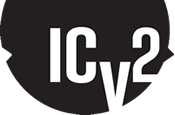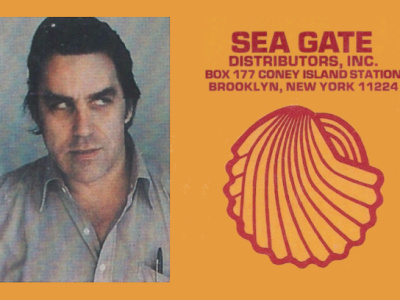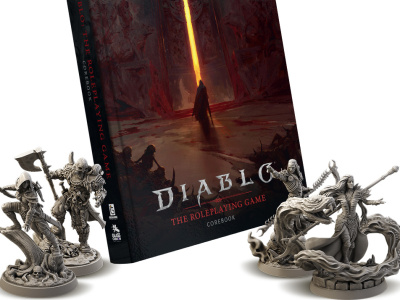We caught up with Kickstarter Senior Outreach Lead, Comics Sam Kusek (see "New Kickstarter Comics Leader") at San Diego Comic-Con to talk about the growth of comics on the platform last year, what’s happening in 2025, the use of retailer tiers, and new functionalities being used for comics.
ICv2: We'd like to start by reviewing 2024 before we talk about 2025. Based on information that Kickstarter released, we reported that dollars raised for comic projects was up on Kickstarter in 2024 (see "Comics on Kickstarter"). Where did you see growth in 2024?
Sam Kusek: It's a mix. Some newer publishers coming to the platform, which was very exciting. Having folks like James Tynion's Tiny Onion come on with an art book in '24, that was a pretty successful campaign.
We also have had a lot of first‑time creators come on and start new series; and a lot of repeat creators just continue their series. Charlie Stickney is a great example with his White Ash series. He's building that up through a couple of issues to trade paperbacks.
It's a mix of newer publishers coming on with existing material and licensees that are bringing those higher‑end collections that are getting some new backers in the door.
G.I. Joe: A Real American Hero was last year too, right? (Note: at $3.37 million, that was the #1 comic Kickstarter of all time. – ed.)
G.I. Joe was last year. That was a really great at getting some new folks in the door. Now we're seeing a good percentage of those folks stay in Kickstarter and find their next favorite comic.
There was also a mention in the reporting that retailer tiers are increasing in importance.
With everything happening with Diamond and just the lack of sustainability and ability to get consistent distribution, a lot of people were hoping to be in Diamond to get their Kickstarter books into stores. I'm really trying to cut out the middleman here, so to speak, by giving retailers more of an opportunity to buy things directly from creators. I've walked into a number of stores and found books that I've loved that I then found out were funded on Kickstarter. That's only because they had a retailer tier available.
For a lot of creators, especially those who are starting out and maybe don't know the business as well as some other creators who have either previously been in the business or have just worked for larger publishers, it's a great way to just get themselves into different markets and gather different readers that exist outside of Kickstarter.
I've been educating people and doing that through our Secret Rewards functionality. There was some concern about having a public‑facing retailer tier. How do you verify that? Because you need to go through the process of making sure they're actually a retailer. How do you make sure that people don't abuse that?
If we use our Secret Rewards functionality, we have the ability to have creators contact retailers directly, create something specific for them so that messaging still feels very catered to that creator‑to‑retailer relationship.
Then, hopefully, if somebody is out traveling or if they're local, they're able to maybe set up a signing, or they're able to go and just get to know the larger community.
Does a Secret Reward mean that the reward doesn't display?
Yeah. With our Secret Reward functionality, you can create a reward that is accessible only by a particular URL. It won't be publicly facing. It can just be sent directly to somebody. If you have a mailing list of retailers, you can just send them that link directly there. It'll still contribute to the project total, but it just won't be accessible by Backer A, Backer B, so to speak.
On the games side, we see rewards set up so the retailer doesn't have to pay for the whole order until the product ships. They'll put some kind of deposit on. Are people doing that on the comics side too?
I haven't seen that as much, just because the minimum on the comics order is a lot lower. I haven't seen that be as much of a problem because you're looking at anywhere from $150 to $300.
It's OK until you do it 20 times.
Based on the usage of retailer tiers I've seen, it's still lower. It's on the lower end. It's something that's growing, probably not as significant as games.
What’s the breakdown between comics versus graphic novels in terms of dollars? It seems like graphic novels has to be a big share of the total, just because of those huge projects, for one thing.
I would say it's probably about a 60/40 split between graphic novels versus single issues, in terms of what is being funded on the site.
What's happening this year? What's changed in 2025 versus 2024?
The big thing this year is the rollout of our Pledge Manager functionality. Traditionally, in comics, it's very common for folks to run a Kickstarter campaign and then do all the post‑campaign management through BackerKit or another third‑party service.
We've introduced functionality for creators to do all of that in‑house under the umbrella of Kickstarter. You can build out those surveys. You can charge shipping and taxes through the service, all at no additional cost outside of our regular fee structure.
It's saving creators some money there. It's keeping some consistency of data, which I know has been an issue in the past with the transition from one service to the next.
We're seeing continued growth. For me, it's been a really stable growth year, where we've seen continued stable growth with some publishers on the site. They're coming back with some consistent campaigns.
A couple years ago, when I was working at BOOM!, we were doing six campaigns a year. I know, for them, that's scaled back a bit. Publishers are starting to find a sweet spot of like three to four big meaningful campaigns throughout the year, which is really great.
Then we're still seeing a large number of first‑time creators coming on the site, trying out new comics. They're launching their first series maybe with a number one, building to a number two. We're still seeing a big influx of that.
I'm happy to share that our success rate is up. It's at 79 percent currently. Our project launches are up this year by 22 percent from where they were last year. We're seeing a lot of people see the sustainability of Kickstarter, see the ability to come in, fund something, print it within a month or two, and then do another project.
Anything in the pipe for the rest of the year that's one of those home run projects like G.I. Joe?
I know Oni just dropped Murder Drones, which I'm very excited about. I think that'll be really great.
Dark Horse is doing an Art of the Star Wars Manga book that is coming out, which is really unique. This is one of the first very recognizable IPs coming in with a manga focus, but it's an art book. It's just an interesting project that I'm curious to see how the Star Wars fan base responds to.
I personally want to see more manga growth on the site. We have some manga‑adjacent properties and some independent manga publishers. Glacier Bay Books does a lot of really good work on our end.
Is Kickstarter a new thing for Dark Horse?
This will be their first official Kickstarter.
You said there's an increase in the number of projects. Do you attribute any of that to the distribution issues in comics?
Yeah, definitely. With the standard systems of power being gone, people are taking more of their creative freedom into their own hands. We've had people on the site (I mention Charlie again, and Kat Calamia and Phil Falco) who have been doing this for a number of years who had become advocates for the service and are encouraging people and doing some of the education work that I do, just out in the world, telling people that you can do this, creating their own success stories, and really demystifying the work that comes along with starting a Kickstarter project.
Also, what I'm seeing is people are setting very realistic goals. With economic uncertainties and people not knowing whether or not they want to print domestically or print internationally, folks are setting more realistic goals as to what they need, as opposed to, in the past, folks were going for broke. They were going to get as much money as they can or setting higher goals with the intent of building a sustainable safety net for their business. Now folks are coming in and saying, 'I need $1,000 to $5,000 to get this out' and focusing on getting the product out to build an audience.

On Growth in 2024, YTD 2025, Retailer Tiers, New Functionalities
Posted by Milton Griepp on August 5, 2025 @ 4:18 am CT
MORE COMICS
Column by Rob Salkowitz
August 5, 2025
In this week's column by Rob Salkowitz, he looks at the industry's biggest show, held in the midst of some existential issues.
Column by Paul Levitz
August 5, 2025
In this column, writer and former DC Comics Publisher Paul Levitz looks at the induction of Phil Seuling into the Will Eisner Hall of Fame.
MORE NEWS
From Glass Cannon Unplugged and Genuine Entertainment
August 5, 2025
Glass Cannon Unplugged and Genuine Entertainment revealed Diablo: The Roleplaying Game.
'Enemies of Gotham'
August 5, 2025
Upper Deck Entertainment announced Enemies of Gotham , a new Batman: The Animated Series board game.








